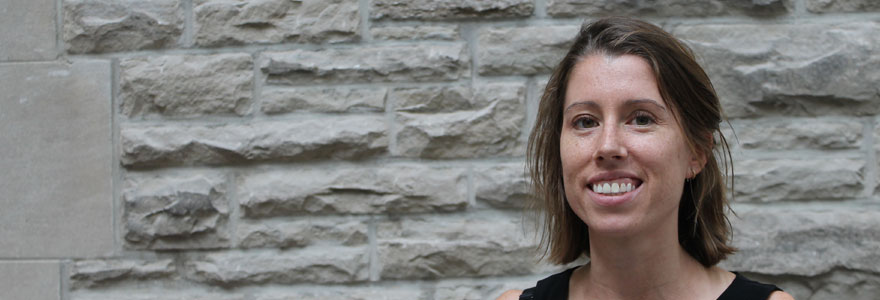News and Updates
Contact
Faculty of Social Science
Social Science Centre
Room 9438
Western University
T. 519-661-2053
F. 519-661-3868
E. social-science@uwo.ca
Investigating the patterns of language learning
December 18, 2019
Photo and story by Rob Rombouts
Learning a language requires people to notice and interpret patterns of speech. A new NSERC funded project by Laura Batterink will look at how the brain processes these patterns.
Batterink, Assistant Professor in the Department of Psychology, has received a 5-year, $177,500 NSERC grant titled’ Insights into statistical learning from neural entrainment’.
Batterink will research the neural mechanisms underlying statistical learning, and which mechanisms are engaged at different stages of the learning process. Statistical language learning is the ability to extract patterns from environmental input.
Batterink said the short-term goal of the research is to understand how neural entrainment to linguistic patterns reflect and guide statistical learning. Neural entrainment occurs when neural oscillations line up to the patterns or rhythms of an ongoing stimulus. With this knowledge, Batterink aims to develop and inform theories of statistical language learning by characterizing the neural mechanisms that support the extraction of patterns from language.
In previous research, Batterink used EEG readings to measure how people picked up on patterns embedded in novel spoken languages. Participants listened to nonsense words in a fake language, repeated at a set frequency. EEG readings measured the brain responses to these words, and then people were tested on their knowledge of these words after. The results showed that the stronger the EEG signal at the word frequency, the better participants did on tasks after.
In the NSERC-funded studies, Batterink wants to look at whether the neural responses are causal, or whether they are just indexing when learning happens, and whether the differences in neural responses predict an individual’s ability to learn new languages.
The findings, Batterink said, may have implications for improving language learning, particularly for adult second language learners.
“We can identify optimal conditions for statistical learning,” said Batterink. “We may also uncover overlooked opportunities for learning.”
This includes investigating whether people can experience neural entrainment during different stages of sleep.
“This is a measure of language learning that doesn’t require a behavioural response, so we can work with anyone and get an understanding of their statistical learning abilities, including infants and people with disabilities,” said Batterink.
In a recent paper, Batterink and Ken Paller, of Northwestern University, tested the rate of statistical learning among people who were distracted by a complex activity. The study showed that, while memory processing is reduced, the neural entrainment signature of statistical learning is unaffected by the demands.
“When you are distracted, you may still be benefitting from exposure to spoken language, even without having to put your full attention into processing the language stream,” said Batterink.

